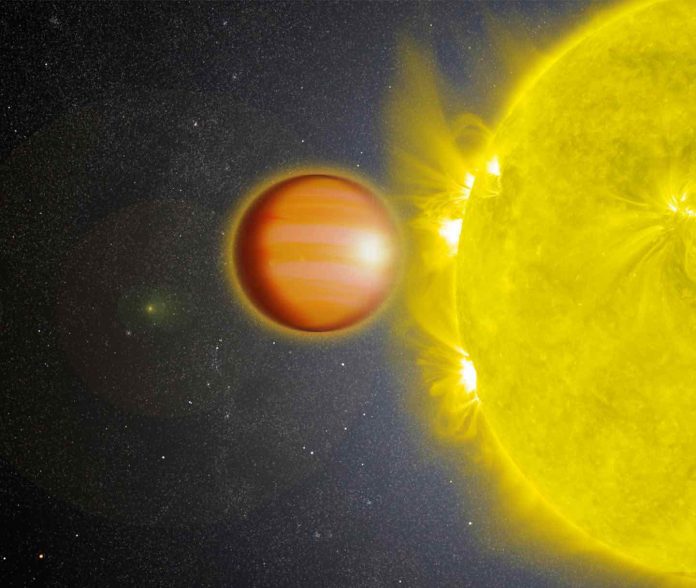Researchers have discovered a planet that they thought could not exist, as its stratosphere is full of carbon monoxide and it has no water at all. This discovery suggests that the planet might have formed in a completely novel way unlike any other planet known to man.
It’s called WASP-18b, and it’s located 325 light-years from Earth. Its atmosphere being full of carbon monoxide hints at a rather unusual composition and origin. A paper describing the planet is published in the Astrophysical Journal Letters.
“The composition of WASP-18b defies all expectations,” said Kyle Sheppard of NASA’s Goddard Space Flight Center in Maryland, the study’s lead author, in a statement. “We don’t know of any other extrasolar planet where carbon monoxide so completely dominates the upper atmosphere.”
The planet, which is 10 times the mass of Jupiter, was studied using NASA’s Hubble and Spitzer space telescopes. It orbits its star in 23 hours at a distance of just 3.1 million kilometers (1.9 million miles), 50 times closer than Earth orbits the Sun.
At this proximity, the planet is known as a hot Jupiter, a class of giant planets that orbit extremely close to their host star. As such, they are likely to have scorchingly hot temperatures.
Light from this planet’s atmosphere showed something that hadn’t been seen before. It hinted at an atmosphere with way too much carbon monoxide and very little water vapor.
“The only consistent explanation for the data is an overabundance of carbon monoxide and very little water vapor in the atmosphere of WASP-18b, in addition to the presence of a stratosphere,” said Nikku Madhusudhan, a co-author of the study from the University of Cambridge, UK, in the statement. “This rare combination of factors opens a new window into our understanding of physical and chemical processes in exoplanetary atmospheres.”
Observations suggest that there’s hot carbon monoxide in the stratosphere, the outer layer of the atmosphere, and cooler carbon monoxide below in the troposphere.
The planet is also thought to contain 300 times more heavy elements than other gas giants, suggesting it collected more solid ices during its formation. This may hint at it originally forming further out in its planetary system before migrating inwards, something that’s been theorized before to explain how hot Jupiters get so close to their stars.
At any rate, it hints at a weird and wonderful world. Who knows what else we might find out there.















